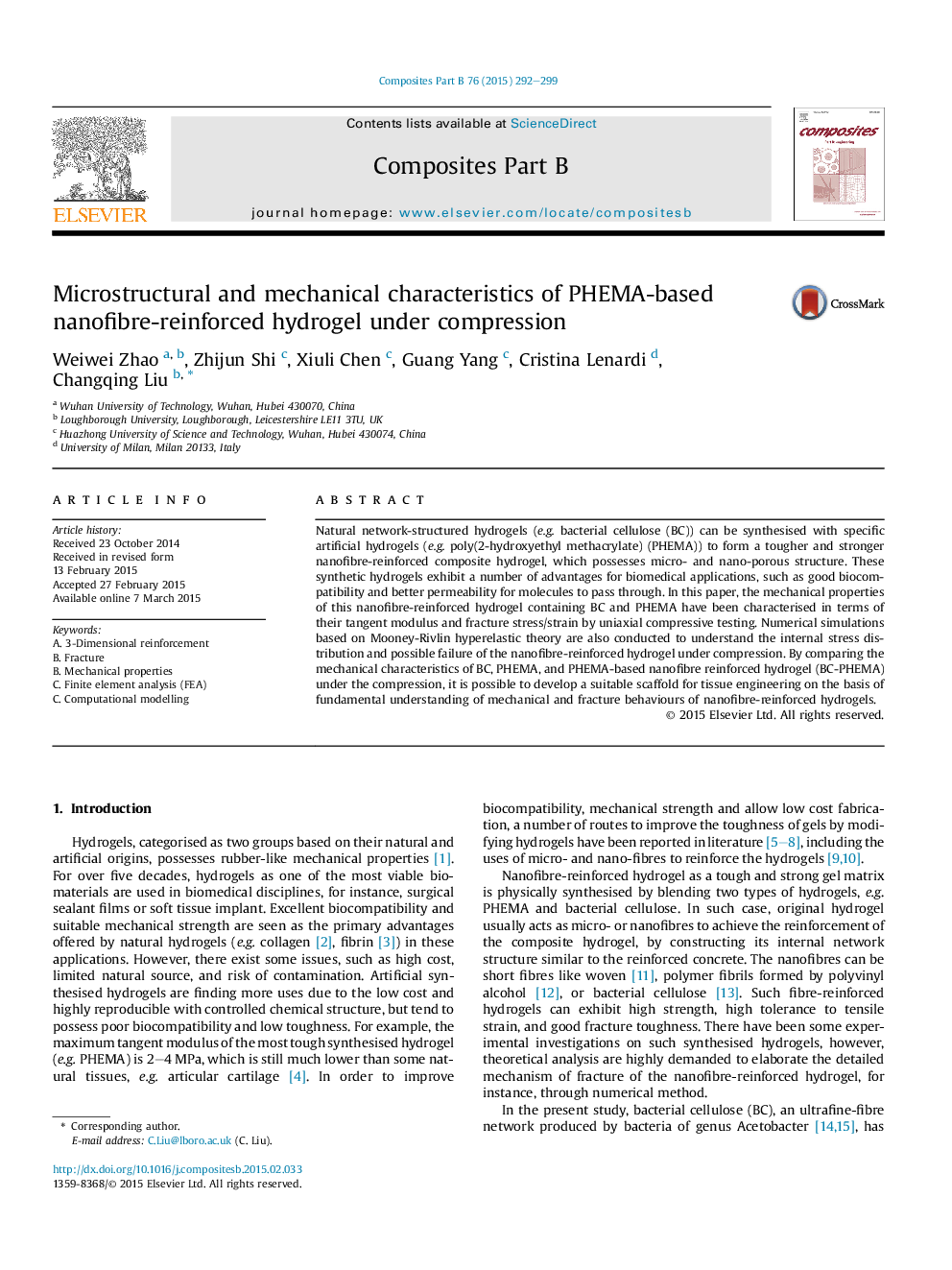| Article ID | Journal | Published Year | Pages | File Type |
|---|---|---|---|---|
| 817345 | Composites Part B: Engineering | 2015 | 8 Pages |
Abstract
Natural network-structured hydrogels (e.g. bacterial cellulose (BC)) can be synthesised with specific artificial hydrogels (e.g. poly(2-hydroxyethyl methacrylate) (PHEMA)) to form a tougher and stronger nanofibre-reinforced composite hydrogel, which possesses micro- and nano-porous structure. These synthetic hydrogels exhibit a number of advantages for biomedical applications, such as good biocompatibility and better permeability for molecules to pass through. In this paper, the mechanical properties of this nanofibre-reinforced hydrogel containing BC and PHEMA have been characterised in terms of their tangent modulus and fracture stress/strain by uniaxial compressive testing. Numerical simulations based on Mooney-Rivlin hyperelastic theory are also conducted to understand the internal stress distribution and possible failure of the nanofibre-reinforced hydrogel under compression. By comparing the mechanical characteristics of BC, PHEMA, and PHEMA-based nanofibre reinforced hydrogel (BC-PHEMA) under the compression, it is possible to develop a suitable scaffold for tissue engineering on the basis of fundamental understanding of mechanical and fracture behaviours of nanofibre-reinforced hydrogels.
Keywords
Related Topics
Physical Sciences and Engineering
Engineering
Engineering (General)
Authors
Weiwei Zhao, Zhijun Shi, Xiuli Chen, Guang Yang, Cristina Lenardi, Changqing Liu,
